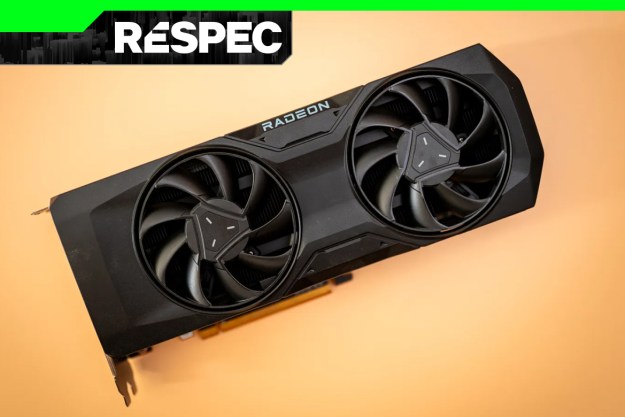If you’re finding it hard to keep up with the prices of graphics cards these days, it’s not just you. GPUs have been getting pricier with each generation, and Nvidia’s latest RTX 40-series is really testing the limits of how much consumers are willing to spend on PC hardware.
Nvidia may have the best GPUs available right now in terms of raw performance, but the way these new GPUs have been priced shows why the role of Intel and AMD is more important than ever.
GPU prices are through the roof
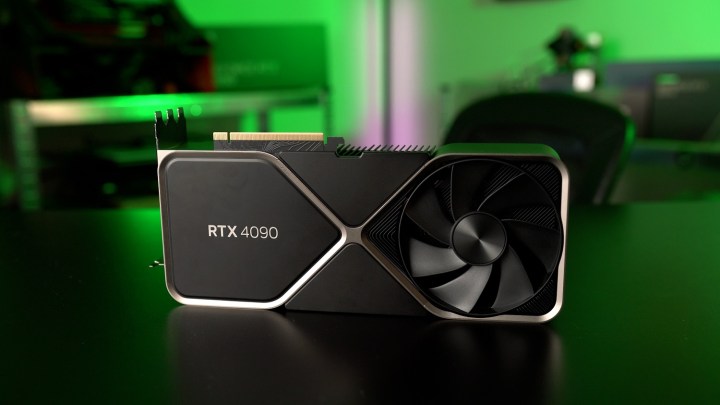
Do you remember the days when you could build a solid gaming PC without spending an obscene amount of money? I do, but it’s been a while.
Don’t get me wrong, it makes sense for GPU prices to increase over time. It also wasn’t shocking when the GPU shortage made the prices skyrocket, with some models costing as much as 300% of the recommended list price (MSRP). But those times are well and truly behind us, and yet, we’re not back to a place where graphics cards are affordable again.
Let’s take a look at the prices of some Nvidia GPUs. First, some older generations.
| GTX 1060 | GTX 1070 | GTX 1080 Ti | GTX 1650 | RTX 2060 | RTX 2070 | RTX 2080 Ti |
| $250 | $380 | $700 | $150 | $350 | $500 | $1,000 |
These dated cards already see exponential price growth, but once we compare them to the newer generations, the prices become jaw-dropping.
| RTX 3060 | RTX 3070 | RTX 3070 Ti | RTX 3080 | RTX 3080 Ti | RTX 3090 | RTX 4070 Ti | RTX 4080 | RTX 4090 |
|
$330 |
$500 | $600 | $700 | $1,200 | $1,500 | $800 | $1,200 |
$1,600 |
It’s nice to see the RTX 3070 maintained the same price as the RTX 2070, but other models have grown more expensive over time.
Zooming in on the last two gens, we can see that the Ada Lovelace lineup is pricey indeed. The RTX 4070 Ti went up by $200 compared to its last-gen predecessor. The RTX 4080 is a whopping $500 more expensive than the RTX 3080.
Compared to those two cards, the eye-watering price tag of the RTX 4090 almost seems reasonable when you consider that it’s only $100 pricier than the RTX 3090. On the other hand, the RTX 2080 Ti was priced at $1,000.
Nvidia is not the only player in the GPU market, though. AMD has been competing against Team Green for years. Intel joined in last year and didn’t make much of a splash, but it’s still important for it to succeed — more on that later. Let’s see how AMD has historically priced its cards.
| RX 580 | RX Vega 56 | RX Vega 64 | RX 5500 XT | RX 5600 XT | RX 5700 XT |
| $200 to $230 | $400 | $500 | $170 to $200 | $280 | $400 to $450 |
AMD has only built a more substantial presence in the GPU market in the last few years, but the RX 580 was a popular card in its time. However, Nvidia has had a broader spectrum of graphics cards, with more GPUs aimed at enthusiasts. AMD didn’t really have an answer to the RTX 2080 Ti until the RX 6000 series came out.
Because of this, it’s hard to compare these older prices on a one-to-one basis. Things begin to even out in the last two generations, meaning the Radeon RX 6000 and the RX 7000.
| RX 6500 XT | RX 6600 XT | RX 6700 XT | RX 6800 XT | RX 6900 XT | RX 6950 XT | RX 7900 XT | RX 7900 XTX |
| $200 to $220 | $380 | $480 | $650 | $1,000 | $1,100 | $900 | $1,000 |
Compared to Nvidia, AMD has kept the prices a little more reasonable on the high end. It’s a difficult comparison, though, because AMD also doesn’t really try to compete against Nvidia’s strongest GPUs. The RX 6900 XT and the RX 6950 XT were both solid alternatives to the RTX 3090, however, and they’re considerably cheaper. AMD has also kept similar price levels for its entry-to-midrange cards.
Intel is new to the discrete GPU market, and from the beginning, it stressed that it’s focusing on performance per dollar instead of raw performance. Arc Alchemist cards can rival Nvidia’s RTX 30-series, so Intel is not up to speed with the current generation, but it did stay true to its “value first” approach.
| Arc A380 | Arc A750 | Arc A770 8GB | Arc A770 16GB |
| $140 | $290 | $330 | $350 |
In our own testing, the flagship Arc A770 lands somewhere between the RTX 3060 and the RTX 3060 Ti. The Nvidia offerings are usually a little more expensive, but the gap is not massive right now.
Comparing apples to oranges
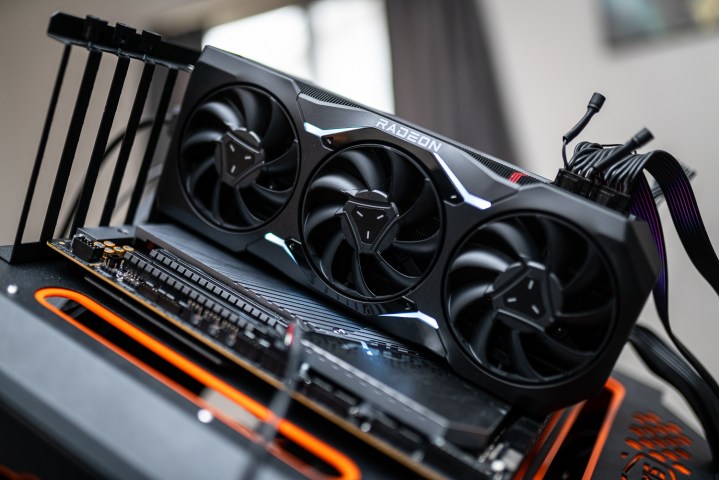
Looking at the performance tells a different story. In this generation, AMD once again doesn’t have an answer to Nvidia’s flagship.
The RX 7900 XTX trades blows with the RTX 4080. Still, that gives AMD a $200 edge over Nvidia, but it’s not an apples-to-apples kind of comparison — it’s more like apples to oranges. Nvidia is still the king of ray tracing, and the RTX 40-series opened up DLSS 3.0 as well, so there is a lead there if you care about those things.
As for Intel, it will be a long time before it launches anything that even resembles any of the 2022-2023 GPUs from AMD and Nvidia. It has never properly entered the race, at least not yet, and it’s hard to tell if it will ever attempt to catch up.
What I’m getting at here is that it’s difficult to compare Nvidia, AMD, and Intel based purely on performance. Looking at gen-on-gen price changes shows that AMD is generally slightly cheaper, at least with its flagships, and Intel filled a gap in the market by coming out with budget GPUs at a time when Nvidia is pushing for expensive behemoths.
It’s all in the philosophy
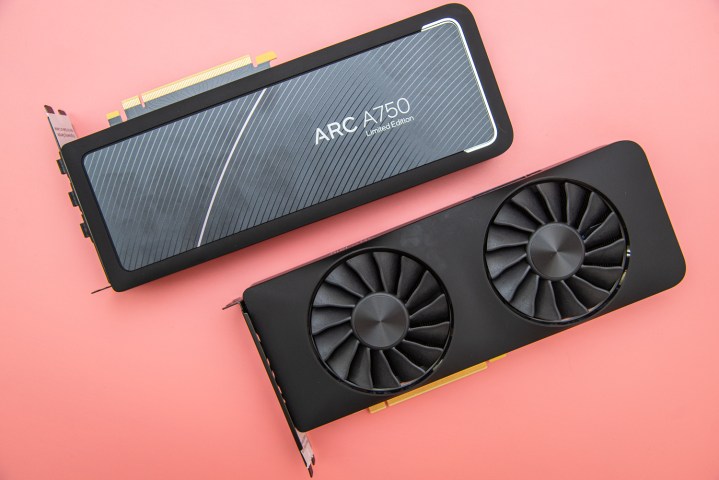
Performance aside, when looking at the rival tech giants, we’re seeing three different pricing strategies and three different ways to approach the GPU market. Unfortunately, Nvidia’s philosophy is becoming difficult to keep up with for many gamers.
The upcoming RTX 4070 is said to be launching with a $750 price tag. If that turns out to be true, Nvidia may finally be killing the idea of making affordable GPUs, seeing as the RTX 3070 only cost $500 at launch.
AMD seems to have adopted a slightly more conservative pricing strategy. It doesn’t aim for the highest highs (both in terms of price and performance), but historically, it has had a good lineup of midrange GPUs to appeal to mainstream users. On the other hand, in this generation, it only has a $900 and a $1,000 GPU out right now, which helps Nvidia pull ahead.
I always appreciated Intel’s candid approach to promoting its Arc Alchemist GPUs. Intel’s experts made it clear that it can’t beat the competition with performance, but it wants to compete on price. While the Alchemist lineup has barely made a dent in the market so far, I’m hoping that Intel will continue pursuing performance-per-dollar with the next-gen Battlemage cards.
Out of these three strategies, Nvidia is the one to lead the pack. That’s nice for Nvidia, but perhaps not always nice for us — the consumers.
Nvidia sets high prices because it can
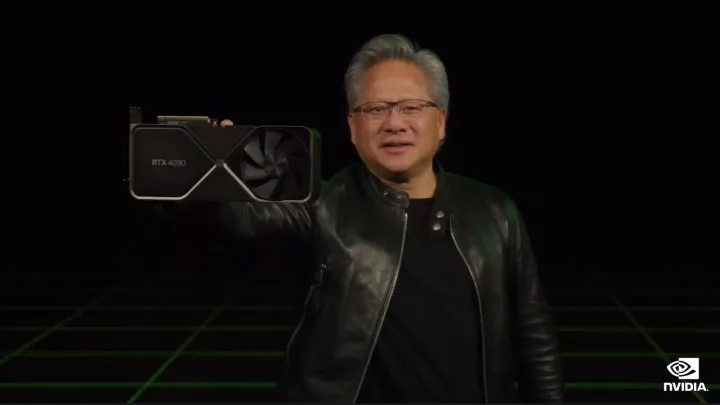
Jensen Huang, the CEO of Nvidia, has openly stated that falling GPU prices are “a story of the past.” This mindset is definitely visible in the way Nvidia prices its products these days. The $1,600 RTX 4090 is expensive enough to pay for a whole gaming PC, but at least it’s still decent value thanks to the insane levels of performance, and hey, it’s an enthusiast-level card. However, it’s hard to justify the performance-per-dollar value of the RTX 4070 Ti and the RTX 4080.
That belief that the prices of GPUs should only continue rising is exactly why we need AMD and Intel to succeed in the GPU market. Nvidia could really use some competition that would make it want to vie for the attention of buyers.
As things stand now, Nvidia can price its products high because it still is the biggest force in the discrete GPU sector by miles. There seems to be no end to how high these prices can go, and if we’re now living in a time where a decent GPU for 1440p gaming costs over $800, it’s only going downhill from there.
I believe that Nvidia needs a challenge, and that challenge is not one focused on performance, but on value. I’m rooting for AMD and Intel to step up to the plate and offer us more interesting GPUs at competitive prices. It’s about time that Nvidia started to worry about threats to its never-ending dominance — we’d all benefit from it.
Editors' Recommendations
- AMD’s gaming revenue is down by 48%, and it won’t get better
- AMD’s canceled GPU could have crushed Nvidia
- Intel may fire the first shots in the next-gen GPU war
- The sad reality of AMD’s next-gen GPUs comes into view
- You shouldn’t buy these Nvidia GPUs right now


